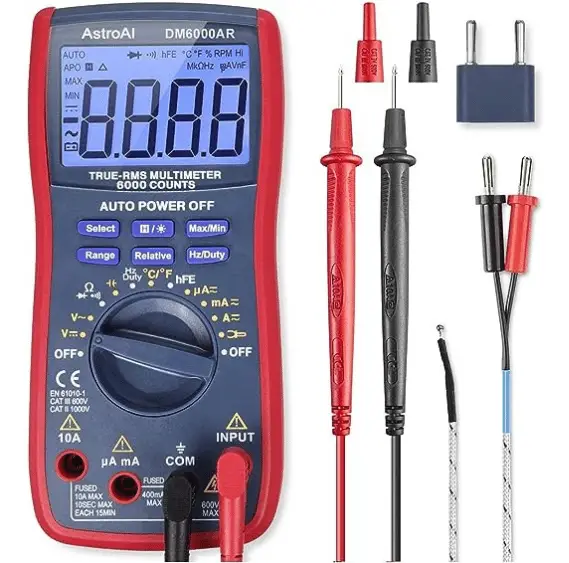It’s a sunny day, and you’re cruising down the highway on your beloved Harley when suddenly, the engine sputters and dies. Your bike loses all electrical power, leaving you stranded on the side of the road. Panic sets in as you wonder what could have caused this and how you can fix it. But fear not, my friend…
My comprehensive guide is here to help you diagnose and resolve some of the most common reasons why your Harley lost all electrical power. We also have comprehensive guides for troubleshooting a charging system on Harley Davidson motorcycles, which includes common Harley no spark issues, ignition switch problems, and what to do when your bike has power but won’t start.
All in all, there are some cheap easy fixes and some not easy, and not cheap, fixes so let’s dive in!

Why Did Your Harley Lose All Electrical Power?
There are several factors that can cause your Harley to lose all electrical power, including a blown fuse, a worn stator, a faulty voltage regulator, a faulty battery, or a loose ground. In the following sections, we will explore each of these issues in detail and provide troubleshooting tips to help you get back on the road.
Diagnostic Tool You’ll Need:

A Blown Fuse
A blown fuse is a common reason for a sudden loss of electrical power in your Harley. Fuses are designed to protect your bike’s electrical system by breaking the circuit if there’s too much current flowing through it. To determine if a fuse is the culprit, locate your Harley’s fuse box and check for any blown fuses. Replace any damaged fuses and see if your bike’s electrical power is restored.
A Worn Stator
Another possible reason for your Harley’s loss of electrical power is a worn or damaged stator. The stator is an essential component of your bike‘s charging system, and it can wear out over time due to heat and stress.
What Does A Stator Do?
The stator is a stationary coil of wire that surrounds the rotor, which is a spinning magnet. As the rotor spins, it generates a magnetic field that induces an electrical current in the stator’s windings. This alternating current (AC) is then converted to direct current (DC) by the rectifier and used to charge your Harley’s battery.
[su_button url=”https://theseasonedwrench.com/best-motorcycle-wax/” style=”soft” background=”#f2000d” color=”#ffffff” size=”11″ wide=”yes” center=”yes” icon=”icon: wrench” rel=”nofollow”]Click Here to Learn About The Best Motorcycle Waxes for That Hog[/su_button]
How Does A Stator Charge The Battery?
The stator generates AC power, which the rectifier converts to DC power. This DC power is then regulated by the voltage regulator and sent to the battery to maintain a proper charge level. If the stator is worn or damaged, it may not generate enough power to charge the battery, resulting in a loss of electrical power.
Testing The Stator
To check the stator, use a multimeter to measure the resistance between each of the stator’s leads. If the resistance readings are outside the specified range, the stator may be faulty and need replacement.
A Faulty Voltage Regulator
The voltage regulator plays a crucial role in your Harley’s charging system by ensuring that the battery receives a consistent voltage. If the voltage regulator is faulty, it can cause an overcharge or undercharge of the battery, ultimately leading to a loss of electrical power.
Testing A Voltage Regulator
To test the voltage regulator, use a multimeter to measure the voltage at the battery terminals while the engine is running. If the voltage is outside the specified range, the voltage regulator may be faulty and need replacement.
A Faulty Battery
A faulty battery is another common reason for a sudden loss of electrical power in your Harley. Over time, batteries can develop dead cells or internal shorts that prevent them from holding a charge.
How Do Battery Shorts Occur?
Battery shorts can occur when the battery’s internal plates warp or become damaged due to excessive heat, vibration, or age. This can cause the plates to touch, creating a short circuit that prevents the battery from holding a charge.
Testing A Battery
To test the battery, use a multimeter to measure the voltage at the battery terminals when the engine is off. If the voltage is below the specified range, the battery may be faulty and need replacement.
A Loose Ground
A loose or corroded ground connection can also cause your Harley to lose all electrical power. The ground connection is crucial for completing the electrical circuit and ensuring that the bike’s electrical components function properly.
Here’s a general procedure for checking for a loose ground:
- Inspect the battery’s ground cable.
- Confirm that it is securely connected to the battery.
- Ensure that it is connected to the bike’s frame.
- Check for a loose ground.
- Clean any corrosion or dirt from the connection points and tighten any loose connections.
[su_button url=”https://www.amazon.com/s?k=motorcycle+multimeter&crid=1QQCI9XR8WFZD&sprefix=%2Caps%2C142&linkCode=ll2&tag=theseasonedwr03-20&linkId=f09686b4c5fec58a1bf4d37536a0e72d&language=en_US&ref_=as_li_ss_tl” background=”#f2000d” color=”#ffffff” size=”11″ wide=”yes” center=”yes” rel=”nofollow”]> Need Diagnostic Help? Shop Multimeters Now[/su_button]
Hey you! Keep your Harley Davidson running in tip top shape with these suggestions:
content continues below
New Release:
- Harley 131 Problems: Screamin’ Eagle Crate Motor
- Harley Davidson switchback problems
- Harley Davidson fuel injection problems
- How to fix a Harley’s high idle
- Harley Davidson 103 Engine: Is It a Good Engine?
Common Mechanical Failures Worth Diagnosing:
My experience renting my motorcycles for cash on the side:
[Riders Share Motorcycle Rentals – My Review As an Owner]
content continues below
Wrapping Up
There are several possible causes for your Harley’s loss of electrical power. These include a blown fuse, a worn stator, a faulty voltage regulator, a faulty battery, or a loose ground. I suggest following these tests sequentially when possible.
Follow the troubleshooting tips in this guide as they will help you diagnose and resolve the issue and get back on track quickly.
However, remember that prevention is better than cure. Regularly inspect and maintain your bike’s electrical system. This will help you avoid unexpected surprises. Safe riding!